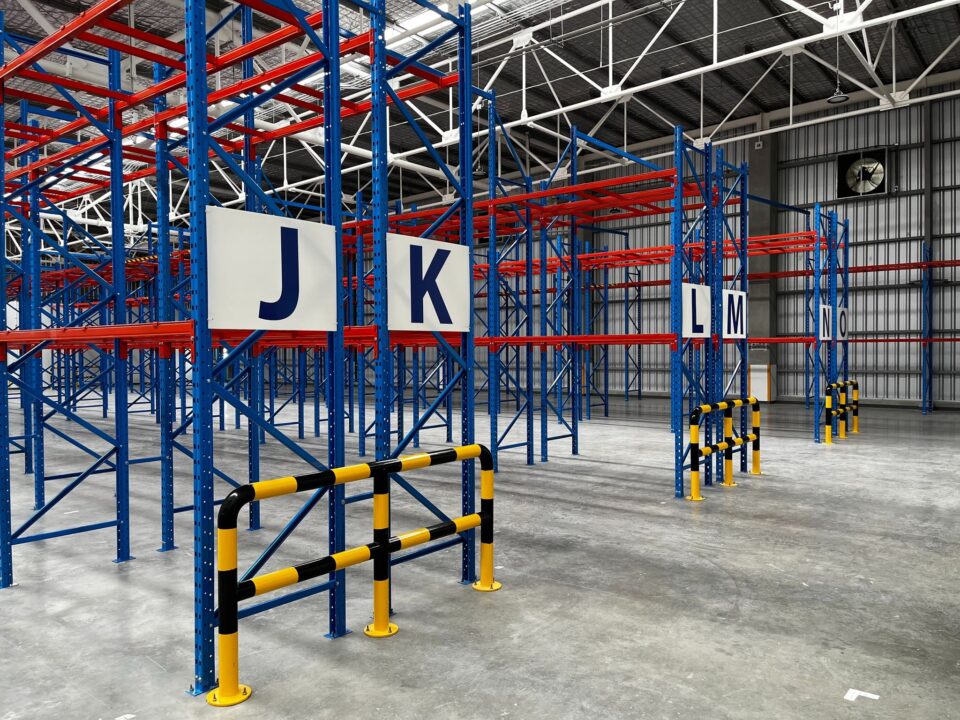
Connect your business network with next-gen collaboration technology
Do you want to deeply modernize your collaboration technology without disruption? To help connect businesses together, we are pleased to…
Lavazza chooses Generix WMS to digitize 4 warehouses. View the press release.

Delaying a WMS investment can have several negative consequences that affect your warehouse operations, your customers, and your bottom line. First and foremost it can result in decreased productivity. WMS can improve ROI by reducing manual processes that are often used. These manual processes can often lead to inefficiencies, human errors, and delays. With WMS, warehouse employees are not required to manually track inventory, pick orders, and locate items, which can be a time-consuming and error-prone process. Because a WMS system solves these problems, companies can begin to track their WMS ROI.
Operating without a WMS system in place can lead to increased errors. Manual processes are prone to errors, and these errors can result in lost inventory, incorrect shipments, and dissatisfied customers. Without a WMS system, your warehouse has a lack of visibility and control over inventory, which can lead to overstocking or understocking and a consequent hit to WMS ROI. Save your business the pain of lost sales, increased costs, and unhappy customers when you work with a WMS system.
An investment in a WMS system leads to higher customer satisfaction, and, for your company, higher WMS ROI. Without a WMS, it can be difficult to meet customer demands for fast and accurate shipments. In a world where customers are accustomed to getting what they want at the push of a button, it is absolutely vital to offer timely and accurate deliveries. With a WMS, your warehouse will be able to keep up with these demands and generate positive ROI.
While implementing a WMS involves an upfront investment of time and money, delaying the decision to invest is not only costlier in the long run, but also prevents your company from reaching the point where WMS ROI is attainable. Moreover, delaying a WMS investment can, over time, lead to increased labor costs. Manual processes are time-consuming, and they require a larger workforce to complete tasks. Manual processes often accrue higher labor costs, eating into your profits over time. When we automate these processes, we can increase our WMS ROI.
Delaying a WMS investment can lead to higher inventory costs. Without a WMS, inventory management can be a challenge, and this can lead to overstocking or understocking. Overstocking can result in higher storage costs, while understocking can result in lost sales and dissatisfied customers. By implementing a WMS with a view toward greater WMS ROI, your business can optimize inventory levels, reduce storage costs, and give your business confidence that you always have the right products in stock to meet customer demands.
Without a WMS system, your business can miss out on revenue opportunities. Operating without a WMS, your warehouse may struggle to meet customer demands for fast and accurate shipments. This can result in lost sales, missed opportunities, and dissatisfied customers. Invest in a WMS for your business to improve warehouse operations, reduce errors, and improve customer satisfaction. Your business is sure to see increased revenue and profits.
To make informed decisions about whether to invest in a WMS, it’s important to calculate the potential return on investment (ROI). There are many benefits provided by WMS in maximizing ROI:
To calculate the ROI of a WMS investment, you can use a WMS ROI calculator. This tool helps businesses estimate the potential savings and benefits of investing in a WMS. It takes into account factors such as labor costs, inventory costs, and customer satisfaction, providing you with a comprehensive view of the potential ROI of a WMS investment.
Many real-world companies have seen significant WMS ROI. For example, one company was able to reduce inventory costs by 20% and increase productivity by 30% after implementing a WMS. For another company, WMS ROI was calculated at 15% reduction in labor costs and a 98% increase in order accuracy. The examples are plentiful and continuously demonstrate the potential benefits of investing in a WMS and the positive impact it can have on your bottom line.
Generix Group is a market leader in adaptability, configurability, and ease of use for warehouse management solutions. Our WMS can be deployed as SaaS or on-premise, making it a versatile solution for supply chain operators dealing with evolving demand, labor shortages, and competitive markets. Generix Group was named in Gartner’s 2022 Magic Quadrant for Warehouse Management Systems for the fourth year in a row, and Gartner ranks Generix Group as one of the two most adaptable and configurable WMS available on the market.
Generix Group’s WMS is built on a multi-tier Service Oriented Architecture (SOA), making it a powerful and versatile solution for warehouse management, and a frontrunner for strong WMS ROI. Our system is the only WMS with seamlessly integrated MES capabilities. Manufacturers can enable Generix Group’s native MES functionalities for fully integrated workflows and detailed inventory visibility. Operations managers can implement warehouse management best practices using Generix Group WMS in their facilities and across their entire network.
At the end of the day, delaying an investment in a WMS can have several negative consequences that affect your warehouse operations, your customers, and your bottom line. While implementing a WMS involves an upfront investment of time and money, delaying the decision to invest can be even costlier over time. To make informed decisions about whether to invest in a WMS, make sure to calculate your potential WMS ROI. The benefits of a WMS in maximizing ROI are never-ending, and real-world companies have seen significant returns on their WMS investment.
Generix Group’s WMS is a powerful and versatile solution for supply chain operators dealing with evolving demand, labor shortages, and competitive markets. Our WMS can be deployed as SaaS or on-premise, making it a versatile solution for warehouse management. Generix Group was named in Gartner’s 2022 Magic Quadrant for Warehouse Management Systems for the fourth year in a row, and Gartner ranks Generix Group as one of the two most adaptable and configurable WMS available on the market. If you’re considering investing in a WMS, don’t delay any longer. Contact Generix Group to learn more about our WMS solutions and how they can help you stay competitive and profitable in a rapidly changing market.

Do you want to deeply modernize your collaboration technology without disruption? To help connect businesses together, we are pleased to…

Understanding what it means to be EDI capable is essential for businesses looking to streamline their operations and improve supply chain efficiency. This guide covers everything from the definition and benefits of being EDI capable to the steps involved in implementing a robust EDI system.

While lesser known than accounts payable automation software, accounts receivable automation solutions automate the capture, validation and process of invoices…

Work with our team to build your ideal supply chain software stack and tailor it to your unique business needs.